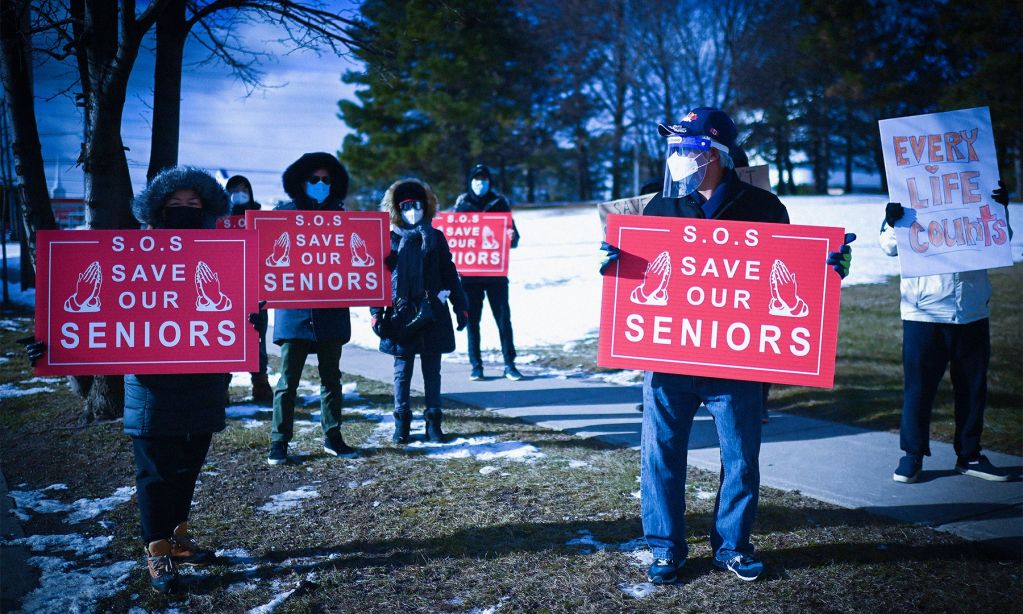In 1974, Manitoba launched its universal, provincewide home care program—the first of its kind in Canada; one that would be emulated by most provinces.
As researcher Amy Twomey has argued, the era of reform this policy emerged from was significant for Manitoba’s long-term care and home care systems. During the 1970s, Manitoba’s continuing care system (long-term care and home care) was brought “in from the fringes” of the provincial welfare state and non-profit, universal care became entrenched.
This is a legacy that would remain salient for decades, with Manitoba maintaining among the most comprehensive, public continuing care systems in Canada throughout the 2000s.
Since then, however, the system has struggled against underfunding and recurrent experiments with privatization—a story that has played out across the country. This underfunding is connected to the lack of value attached to care labour in Canada’s health care system, which is disproportionately work done by racialized women.
Across the country, long-term care was one of the hardest-hit sectors during the first years of the pandemic.
Manitoba had among the most COVID-19 related deaths, per capita, in long-term care, with some of the worst outbreaks in the country reported at Parkview Place and Maples Long-Term Care Home, both owned by Ontario-based Revera Inc.
The tragedies inflicted by COVID-19 prompted a national conversation on how the precarious forms of employment, razor-thin staffing margins, low wages, and lack of access to sickness benefits were undermining conditions of care.
To better understand the experiences of Manitoba’s continuing care staff during the heights of the COVID-19 pandemic and afterwards, we conducted a survey of 1,027 home care and long-term care staff in Manitoba’s public continuing care system.
The survey results found that the outsized burden placed on continuing care workers during the pandemic has not been lifted and, in many ways, has gotten heavier.
The severe impact of understaffing on stress levels jumped out as a major trend. Among the continuing care workers surveyed, 69 per cent in long-term care and 75 per cent in home care reported that staffing levels in their workplaces were worse than before the pandemic.
Over two-thirds of staff in both long-term care and home care reported working short staffed at least a few times per week.
While around two-thirds of respondents agreed that they are still able to provide adequate care, 75 per cent of staff in long-term care and 68 per cent in home care said that the pandemic has negatively impacted their daily workload.
As well, 84 per cent of long-term care staff and 75 per cent of home care staff indicated that, most days, they feel rushed at work, pointing to an unsustainable workload.
The stress created by short staffing is producing a vicious cycle of burnout, leading to more staff attrition and high rates of time off due to work-related physical and mental health issues.
Close to six in 10 continuing care staff reported sustaining an injury on the job while four in 10 reported taking more than a week off work due to a mental or physical issue caused by their work.
Many workers reported dissatisfaction with wages, hours, and benefits. Most workers in both long-term care and home care work part-time or casually, with young workers and newcomers keen for more hours.
Respondents’ average wage was $20.19 per hour, $3.81 below the provincial median wage in 2022.
Through the federal Caregiver Wage Support Program, continuing care workers in Manitoba received wage top-ups of $850 per person, on average, between November 2020 and January 2021—far below other provinces.
Across all sectors, Manitoba spent $155 million on wage top-ups, leaving $10.5 million in federal funding on the table. Unsurprisingly, only 15 per cent of long-term care staff and 10 per cent of home care staff felt their income allows them to save for the future.
Continuing care workers in Manitoba narrowly avoided a strike in August 2022, following 21 months of bargaining and over five years without a contract. The contract provided retroactive pay and a wage increase of 9.6 per cent over seven years. However, given that the annual inflation rate was 9.4 per cent in June 2022, workers will be looking for another pay increase when their contract expires this year.
The survey results underline the presence of a highly gendered and racialized division of labour in care work. Women make up 86 per cent of long-term care staff and 91 per cent of home care staff.
In terms of immigration status, 28 per cent of staff in long-term care and 38 per cent of staff in home care identified as newcomers to Canada.
Through their research with immigrant and migrant home care workers in Manitoba throughout the pandemic, researchers Leah Nicholson and Mary-Jean Hande found much more needs to be done to recruit and retain immigrant and migrant care workers, who make up the backbone of the provincial system.
This includes support to address the increase in racism experienced at work during the pandemic, improved settlement supports, and improvements to job security, wages, and benefits.
In addition, their research finds a need to curb the growing presence of the private sector in home care, which is driving an erosion of working conditions in some areas.
Which brings us to the ‘stealth’ privatization occurring across continuing care: 70 per cent of staff in long-term care indicated they work alongside staff from private agencies every day or a few times per week.
Over 50 per cent of respondents said they are likely to leave their workplace soon, with many indicating they would prefer to work for a private agency where they can control their hours and earn higher wages.
Four years into the pandemic, another vision for reform and reinvestment in staffing is desperately needed. The signature of a bilateral health agreement with Manitoba in February 2024, which provides $199 million for long-term care and home care over five years, makes important steps forward, but still leaves gaps in staff support.
The agreement draws $37 million per year to hire staff sufficient to achieve 4.1 hours of care per day (the minimum safe level of care established by the Health Standards Organization) in long-term care by 2027.
This will be the largest investment in staffing in decades. However, emerging research from the U.S. points to 4.5 hours of care as a more appropriate standard, due to increasing resident needs. Hiring enough staff to achieve 4.1 daily hours of care will be difficult without investments in training, retention for immigrant, migrant, and all workers, and improvements to wages, hours, job security and other conditions.
The bilateral agreement makes new money available for the palliative care and the Self and Family Managed Care program (which provides funding for individuals to arrange their own home care). While this funding is critical, it will not address the erosion of staffing in the public home care system.
As the pandemic becomes more distant in people’s minds, we can’t forget some of its toughest lessons. This includes ensuring long-term and home care workers get the respect they deserve.







